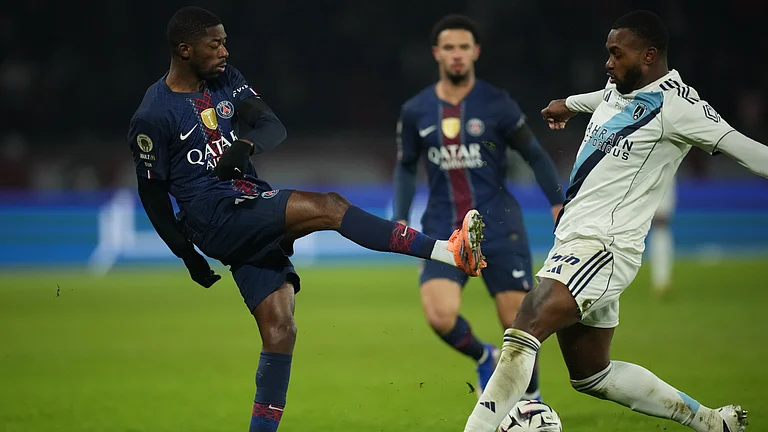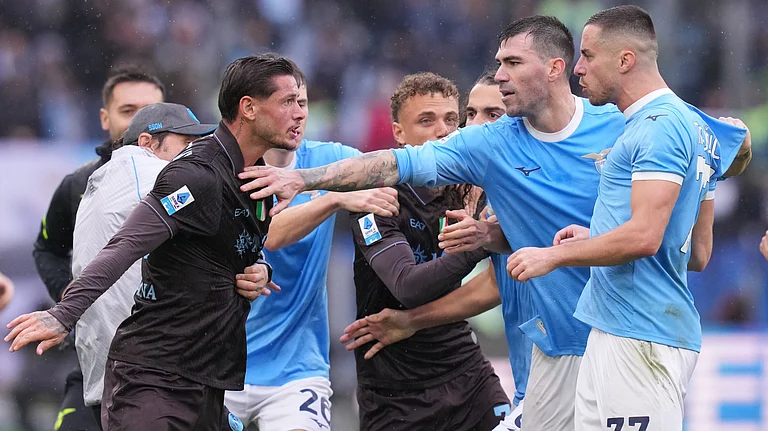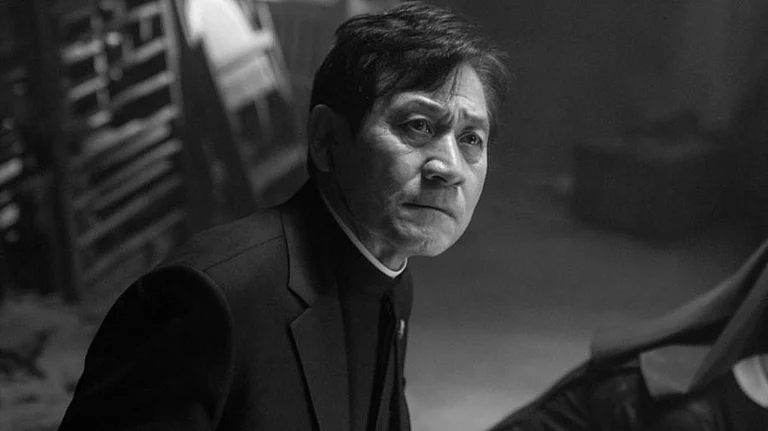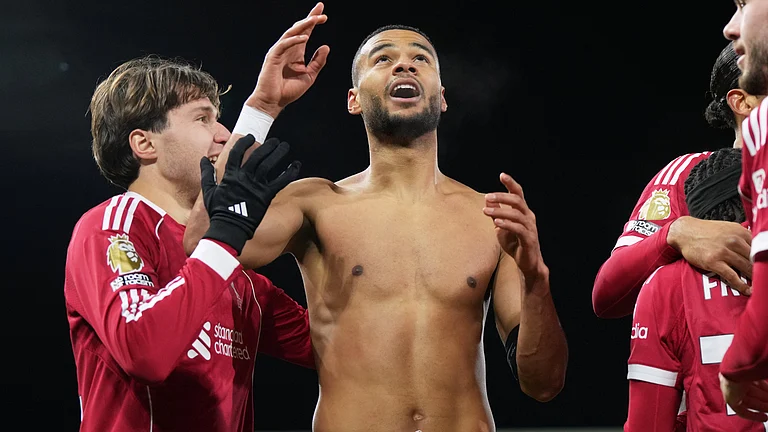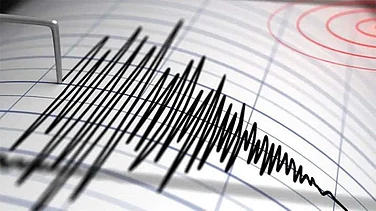On May 28, Prime Minister Narendra Modi inaugurated the country’s new parliamentary building. The event was marked by the overt visibility of Hindu priests from Tamil Nadu and conspicuous absence of President Draupadi Murmu, while 21 opposition parties boycotted the function in protest. Their objection stemmed from the belief that the president, as the ceremonial head of the state, should have been responsible for inaugurating the parliament instead of the Prime Minister.
Some Opposition leaders even accused the ruling Bhartiya Janata Party (BJP) of deliberately choosing the birth anniversary of the Hindutva ideologue Veer Savarkar as an auspicious date for inauguration, adding to the controversy.
Despite the Opposition’s protest, Modi orchestrated yet another grand spectacle, a defining characteristic of his regime, as he presided over a Hindu ritualistic puja to inaugurate the parliament house. The ceremony involved the participation of Hindu priests and the installation of a sacred ‘Sengol’, a symbol representing the divine right to rule for the king.
The Sengol, or scepter, signifies that the king’s authority is derived from God. As God cannot physically hand over the scepter to the king, in this case the priests, specifically Brahmins, symbolically transferred the scepter to the ruler, signifying the transfer of power and authority. In ancient and medieval times, the king’s power was believed to be derived from God, which meant that his actions and words could not be challenged by ordinary mortals. The Sengol signifies the rule of the monarch as absolute and unconditional. They were not required to answer to their subjects or limited by laws or parliament. Hence, the visuals of Modi installing the Sengol in the new parliament, which is a space of democratic representation and debate, seemed strange and contradictory to many observers.
If one closely examines Modi’s actions and statements since he was announced as the prime ministerial candidate by the BJP in 2013, it becomes evident that he has carefully constructed and cultivated the image of a charismatic leader. This image tries to negate his presence in impure grounds of mundane politics and situates him in a higher ground of accomplishing a civilizational mission of restoring the glory to the nation which was desecrated by thousand years of slavery under Muslim and British rule. In a way he was destined and divinely ordained to rule the country. This politics operates in an affective realm and often betrays rational political thinking and analysis.
The inauguration of parliament is just one of many instances where Modi has sought to project a persona of divine significance and a greater calling. This portrayal has been carefully constructed and developed over time. Noteworthy examples include Modi’s meditation in a cave near the Kedarnath Temple in Uttarakhand the night before the 2019 elections concluded. Additionally, in 2016, Kiran Rijiju, the Member of Parliament from Arunachal Pradesh, shared a Facebook post claiming that the French seer Nostradamus had predicted in 1555 that Modi would govern India and lead it to greatness, which became viral in social media. Furthermore, a children’s comic book titled “Bal Narendra” was released in 2014, promoting the extraordinary qualities of a young boy destined to rule and usher in a new era.
Sociologist Max Weber argues that charisma is not defined by the possession of inherent supernatural or extraordinary powers by a leader, but rather by the perception and belief of the leader’s followers that they possess these exceptional qualities. Modi’s supporters firmly believe that he has been divinely ordained to rule the country and restore its past glory. During 2019 Lok Sabha election, a BJP supporter in Ranchi passionately argued by saying, “Modi is not like any other politician past or present. He is here to accomplish a divine duty of restoring the lost pride and glory of Hindu rule. He is an incarnation of Lord Ram himself.”
Many of Modi’s supporters embrace the notion that he is engaged in a superior mission that transcends the realm of democratic politics. Fittingly, Modi was the chief protagonist of the spectacle that marked the house-warming of parliament, a new parliament for a ‘New India’ whose founding father is Modi himself.
The symbolic act of Adheenam priests presenting the holy Sengol to Modi and his subsequent installation of it near the Speaker’s high chair in the new parliament may appear unusual within a democratic order. However, the democratic backsliding in India under the Modi regime ensures that such an act does not seem strange but uncannily normal in a polity that is being rapidly Hinduised and unabashedly displaying its majoritarian tendencies.
Moreover, the scene of wrestlers protesting outside parliament, forcefully dragged by the police, while the focus inside parliament remained on the cult of personality surrounding Modi should not be regarded as abnormal. Sadly, this has become the fate of many protesters who have opposed the current regime. The divine right to rule bestowed on the ruler by the Sengol leaves no room for dissent or disagreement by his subjects. Hence, the scenes inside and outside parliament were not contradictory but complementary to each other.
The inauguration of the parliament showcased significant aspects of Modi’s political repertoire, which have played a defining role in shaping his political image during his nine years of power. Three noteworthy aspects warrant close attention when comprehending his political approach.
First, like many of his events, this occasion was a grand spectacle revolving around the cult of personality surrounding Modi. After he came to power in 2014, every event became an opportunity for him to perpetuate his larger-than-life image. These spectacles aim to construct an aura of invincibility, unquestionable authority, and an unconditional adoration of the leader, surpassing rationality. Through visual and performance-driven elements and media manipulation, these spectacles shape public perception, evoke emotional public reactions, and divert attention from substantive issues. Consequently, Modi’s image permeates various platforms, including social media, television, newspapers, and numerous hoardings across the country, signaling his omnipresence. With mastery of the politics of spectacle, Modi has effectively employed it to cultivate an extraordinary, almost otherworldly persona.
Second, the event exhibited a noticeable presence of Hindu religious symbols and rituals, even the Hindu priests who came to conduct the inauguration rituals paraded with Modi inside the parliament. The inauguration ceremony of the parliament looked eerily similar to the Bhoomi Pujan of the Ram Mandir in Ayodhya, which was presided over by the prime minister in 2020. There have been concerted efforts during the Modi regime to Hinduize the polity and infuse Hindu rituals and symbols in state institutions. The saffronization of the public sphere has been a critical feature of the Modi regime. The inauguration ceremony of parliament was another event that reflected the changing nature of Indian polity.
Third, the event also became another occasion for Modi to proclaim the emergence of ‘New India,’ which is starkly different from India before 2014. Modi’s inaugural speech in the parliament emphasized that the ‘New India’ despite of its novelty and new energy reflects a continuity with ancient India, the glorious Hindu past in this case signified by the Chola rule. According to Modi, New India is both retrospective and prospective. The inauguration of the new parliament was another moment in the project of building a New India, whose chief architect and protagonist is Modi.
In a democratic and secular state, the prevalence of explicit religious symbolism and rituals from the majority religion, particularly during the inauguration of parliament —a symbol of democratic representation and functioning— would typically elicit strong public backlash. However, in the case of contemporary India, this is not entirely unexpected considering the sociopolitical dominance of Hindu majoritarianism and the immense popularity of Hindu hriday samrat Narendra Modi.
The founding fathers of our nation had forewarned about the potential for such developments when BR Ambedkar said in the constituent assembly: “Constitutional morality is not a natural sentiment. It has to be cultivated. We must realise that our people have yet to learn it. Democracy in India is only a top-dressing on an Indian soil which is essentially undemocratic.”
(Views expressed are personal.)







